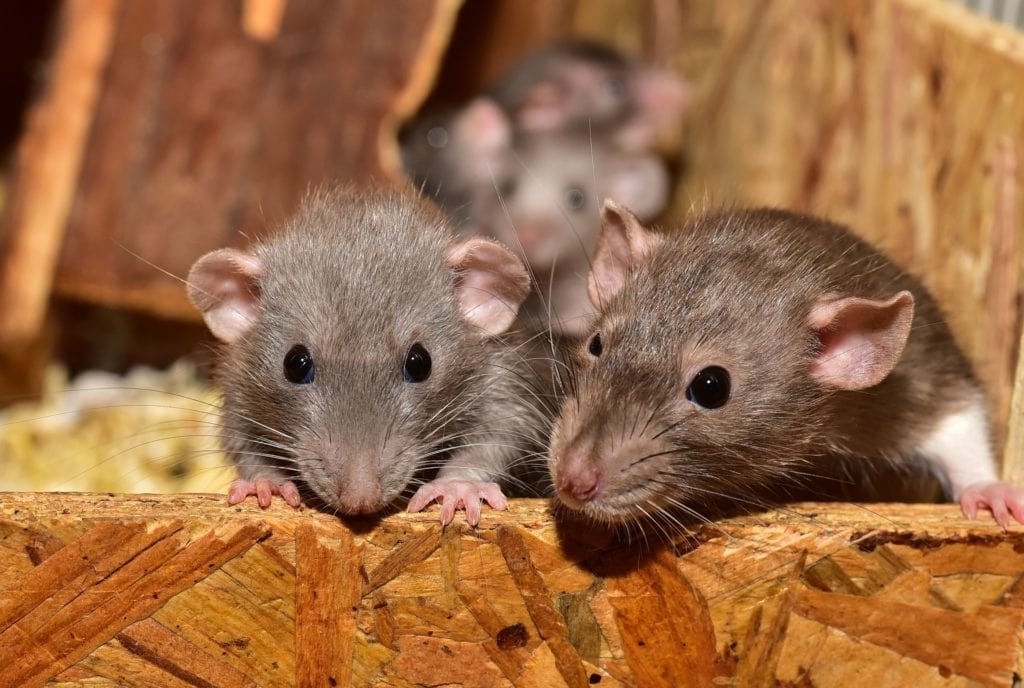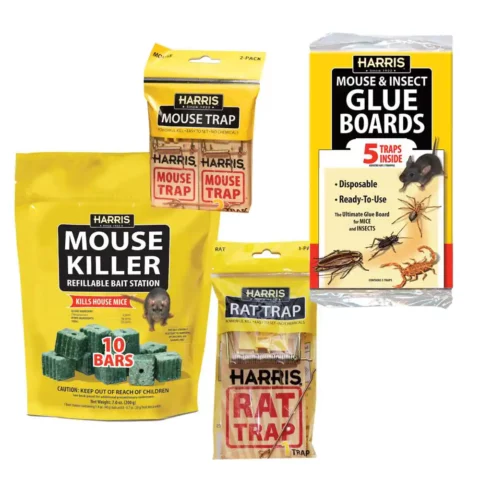How to Get Rid of Rats in the Garden: 6 Effective Methods
-
Brooke Bundy
- Last updated:

Besides soiling your soil, rats may cause other problems in your gardens such as digging or eating your vegetables. Rats can also carry deadly diseases, so you don’t want these grimy pests running their grubby feet over your produce. While you can buy chemical deterrents, these are bad for you and the environment, and should only be used as a last resort. Here are some natural methods to resolve the rat crisis, as well as ways to determine whether your uninvited guest is indeed a rodent or another garden pest.

How to Tell If You Have a Rat Problem

Thankfully, it’s easy to tell if rats are scampering through your vegetable patch when you’re not looking. Look for cylindrical droppings about 5 mm wide and 15 mm long. These should be plentiful if the suspected rats frequent your yard because they can leave up to 40 droppings each night!
If you have a dog or cat, you should also pay attention to any uncommon behaviors your pets may give you such as barking at night or intensely sniffing in the yard. Rats are nocturnal creatures, so if your dog has picked up a new habit of barking wildly at 3 a.m., that might be a sign that their keen ears have picked up some noise coming from the cabbage patch. You might set out an outdoor camera or a ring doorbell to catch these pests in action.
You might also spot “rat runs,” which are dirt pathways that rats often dig around the perimeter of your garden, chicken coop, or fence. They tend to be small, no more than four inches wide and not very deep.
You could inspect your produce for bite marks, but keep in mind that there are many other garden pests such as bugs that may be mooching off your vegetable patch. A better way to determine if its rats is to look for bite marks in wooden structures. Rats have giant teeth that can leave a considerable impression on your fence posts.

The 6 Methods to Get Rid of Rats in Your Garden
To prevent rats from overtaking your garden, you need to identify what’s attracting them to your yard. Like all creatures, rats seek food, water, and shelter. Notice what ways your yard provides these things to the rats and look for ways to make these things less appealing to rodents.
1. Close Off or Remove Structures That Provide Shelter
Does your shed have holes big enough for rats to crawl inside? Is there space underneath your porch for rats to nest? Making sure buildings are tightly sealed gives rats the message that they need to choose somewhere else to live. Keeping your yard clean, such as removing toys overnight or not allowing large structures such as tires to stay in one spot for very long, also limits their hiding places. Closely trimmed grass also discourages rats from sneaking around in the open.
2. Secure the Compost Bin and Limit Outside Food
Your growing vegetables aren’t the only food source for scouring rats. These scavenging pests might find last week’s potato peels just as tasty as a ripening tomato. Tighten the lid on the compost bin so that they can’t climb inside and grab a bite. Your kid’s cracker crumbs stomped around patio tables or bird seed scattered on the ground can also draw them in. Try to keep your yard as free from loose food as possible.

3. Eliminate Standing or Dripping Water
While you might not want to dump out your bird bath, you should overturn that stagnant water collecting in your wheelbarrow or tighten the spigot on your water hose to prevent water from dripping. Rats need water to survive, so if they can’t find this essential ingredient for life they’ll probably move on.
4. Grow Peppermint
Rats hate the scent of peppermint, so you might want to consider adding this herb to your garden plot at various intervals to ward them off. You might also try mixing some drops of peppermint essential oil in a spray bottle with some water and misting near your home and garden to discourage rats from coming near. If you’re not a huge fan of mint, you can use citronella or eucalyptus instead. Rats and other common pests such as wasps don’t care for certain other plants like marigolds either.

5. Employ a Cat
If you don’t already have a kitty, consider adopting a family cat or recruiting a feral cat to chase away rats. Your cat will probably either eat the rat or deter them from coming onto the property through their speed and determination. Either way, problem solved.
6. Set a Trap
Rat traps are easy to source from a hardware store or garden center. Keep in mind though that this isn’t the best solution if you have small children or pets who might also get caught in the trap.


Conclusion
With their beady eyes and long tails, rats are never a welcome sight in your garden. They can carry diseases and eat your crops, as well as engineer tunnels through inconvenient areas such as alongside your fence. Although you could call pest control, this should be a last resort since rat poison can be dangerous to humans and pets. There are so many natural ways to repel these pests, so consider these easy methods before reaching for your phone.
Featured Image Credit: Joshua J. Cotten, Unsplash
Contents
